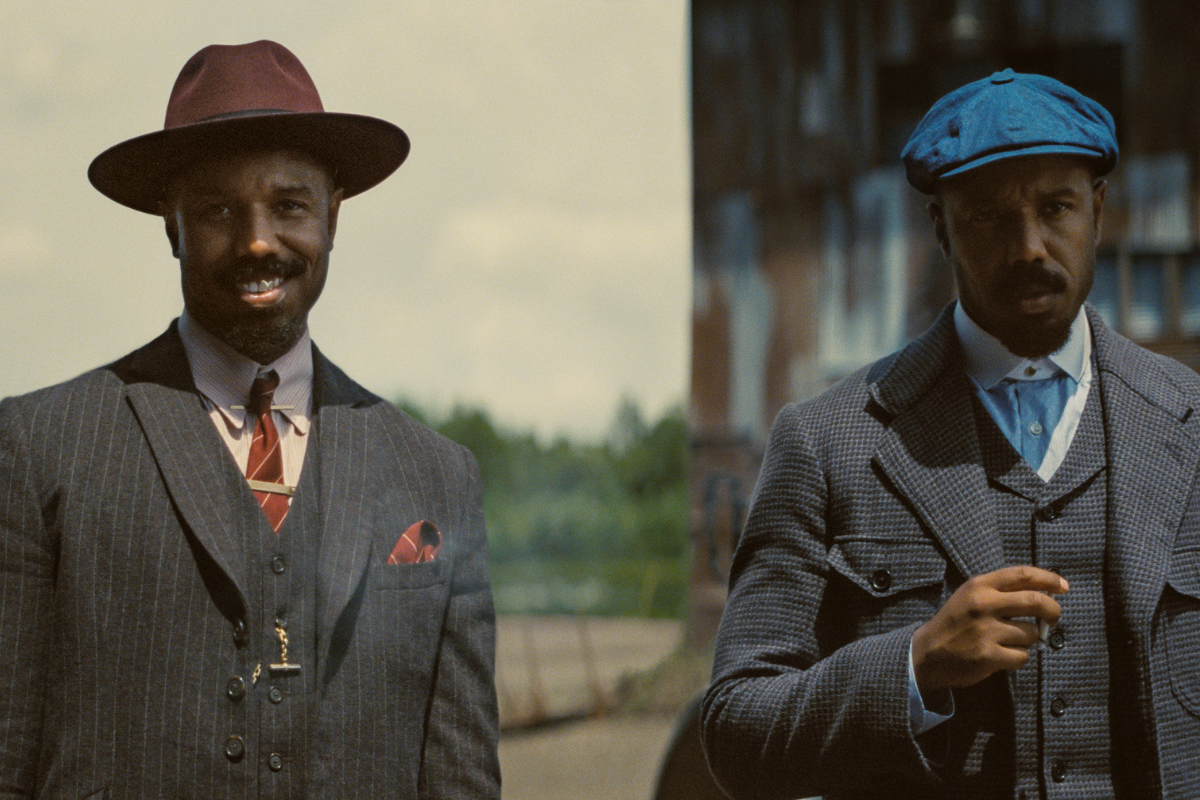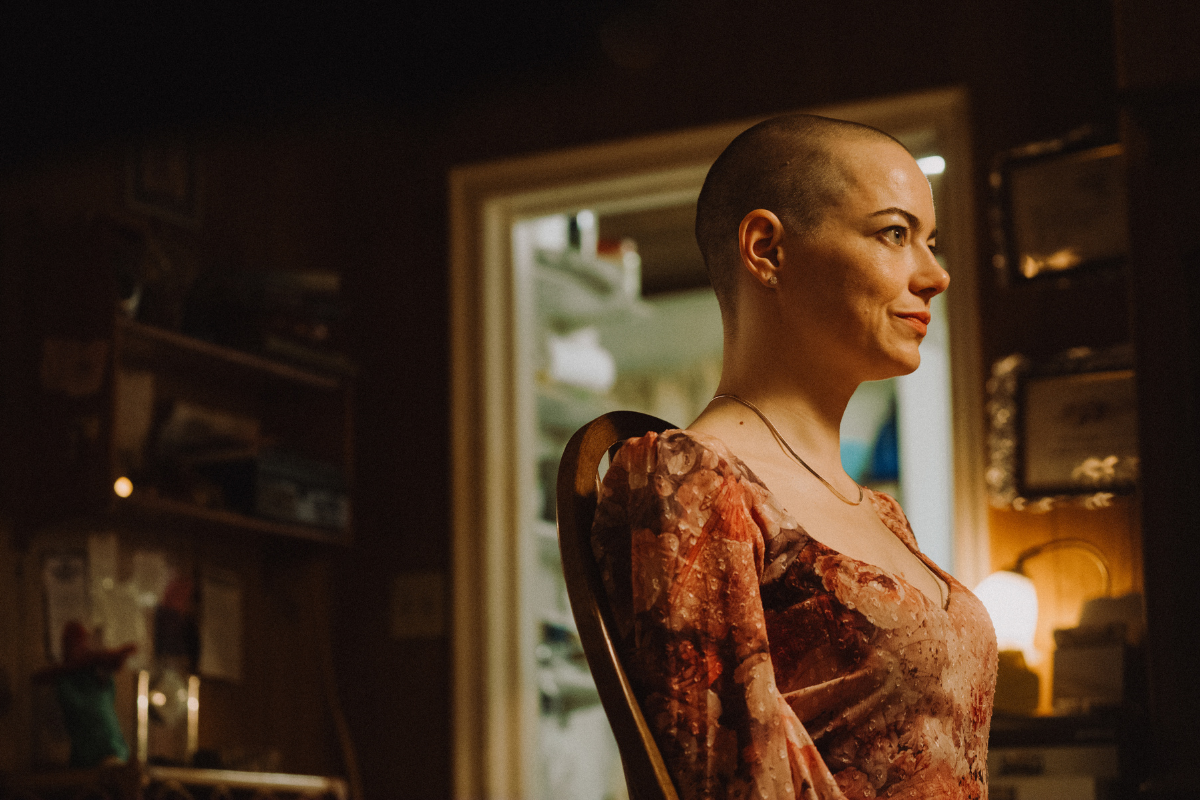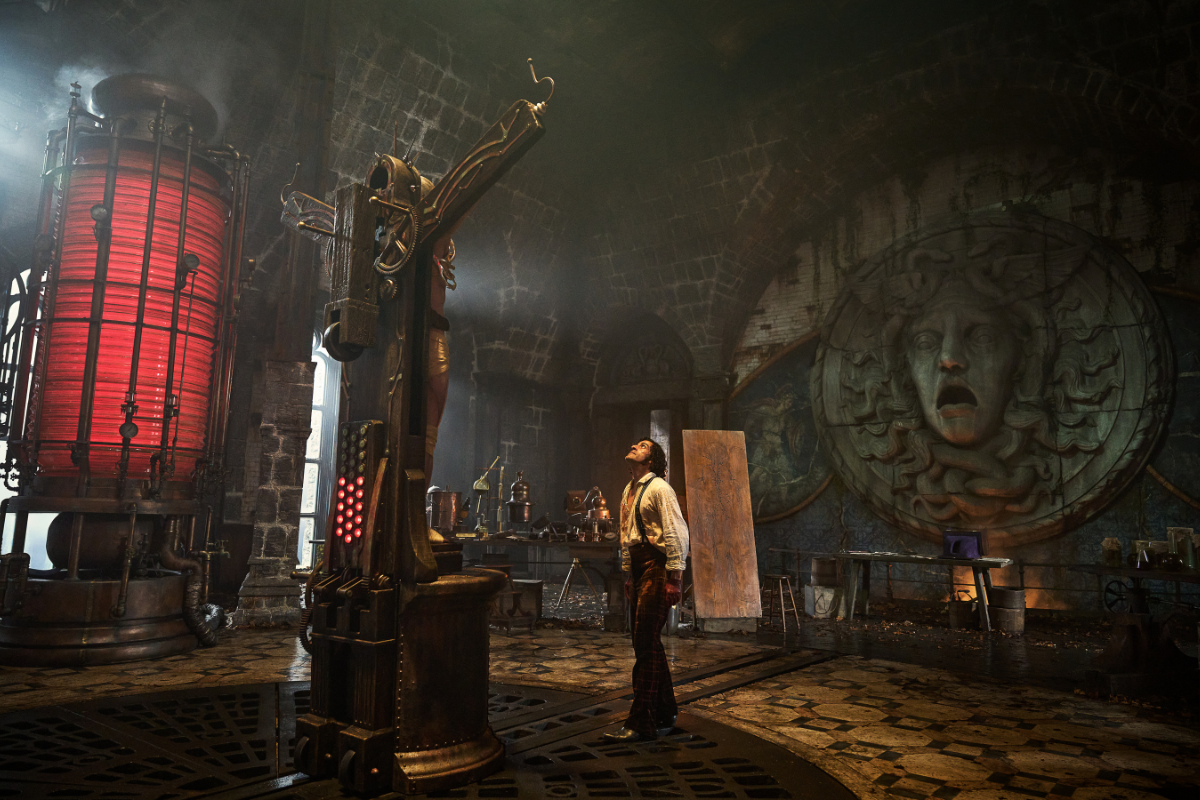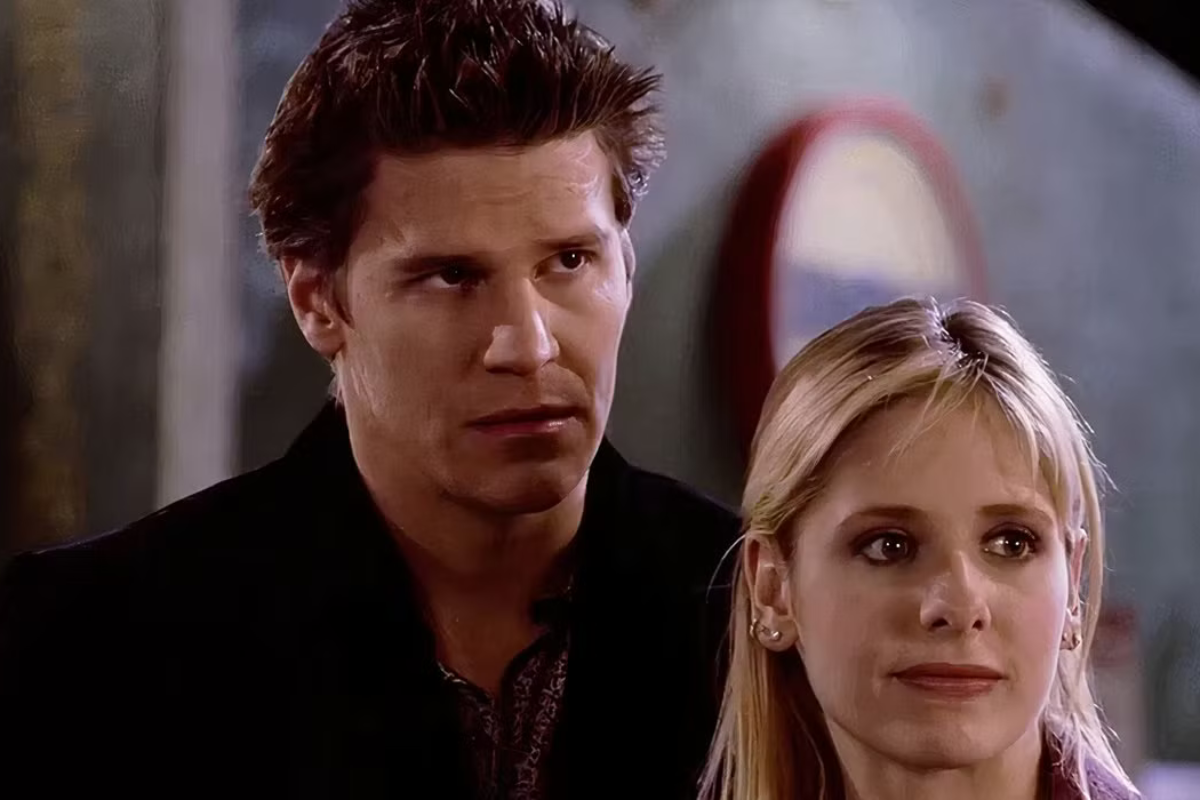Script Gods Must Die: Adaptation – Faithful Or Original?
Dan Sutherland, a Chicago playwright pal of mine, once took a swipe at Shakespeare, concocting his “Biker Macbeth” from the deepest recesses of a pickled imagination. It was years ago…
Dan Sutherland, a Chicago playwright pal of mine, once took a swipe at Shakespeare, concocting his “Biker Macbeth” from the deepest recesses of a pickled imagination. It was years ago and I’ve blocked out his actual reboot. I do remember one scene where Macbeth in black biker gear rolls a black bowling ball across the stage toward a leather-clad Macduff… slowly! It took 15 seconds for the ball to crawl across the stage. Every character watched its inevitable progress toward Macduff. Ominous as hell. Why that image stays with me today I cannot say but one thing’s for sure—Biker Macbeth wasn’t how Shakespeare conceived it.
When adapting a play you’ll need to decide just how faithful you want to be. Let’s be clear: You owe nothing to the original source material except the pursuit of the best adaptation possible. That means you can write a script quite close to the source material, or you can blow the first conception apart and put the pieces back together through your own POV prism.
When I talk about exploding the source material, know that I have, personally, always favored the faithful adaptation to the “original” adaptation. That doesn’t mean you should. For me there has to be something in the source material that resonates. I want to honor that, and honor the writer too. I’m not exploding anything without damn good reason, and you should consider your own motivations for picking up the project in the first place.
What spoke to you? Preserve that, if possible. Will you need to boil down locations and/or characters? Which ones? Will you be adding or trimming dialogue?
There are risks involved. It takes money to produce theater, so consider your audience. Biker Macbeth was produced by Prop Theater for a 60-seat Chicago black box space. The audience was a rock-and-roll Non-Equity, North Avenue crowd that bought a ticket expecting desecration. Compare that with Steppenwolf Theater. Sure, Biker Macbeth would have made their radar in ’78 when they were producing out of a Highland, Illinois church basement. But today? They need to fill a 2,000+ seat auditorium with subscriber audiences from Naperville. Is Biker Macbeth gonna get that done?
Adapting for film is likewise pragmatic. You will surely piss some fanboys off if your graphic novel or comic book adaptation isn’t down to the letter, carbon-copy, scene-for-scene. But adaptation isn’t straight translation. It’s fathoming the spirit of the source material, transmuting it from one medium to another.
For those of you without $22,000+ for that Columbia College Cinema Art + Science degree, a serious education on how to write an adaptation can be found at Simply Scripts. Feast your eyes on 10 years of Oscar-nominated adaptations. Also instructive, from the Wikipedia elves, is this chart on every Oscar adaptation dating back to 1927. You’ll note that all three of them, including The Jazz Singer, were stage plays.
If Steppenwolf cares about the bottom line when picking its material, you can believe film Studios and Mini-Majors do as well. Statistics found here indicate that “Over the eighty-five years that the (Oscar) awards have been given (since 1929), fifty-four Best Picture winners officially have been derived from novels, nonfiction books, newspaper articles, or stage dramas. For you numbers-crunchers, that’s 63.5%. Since comic books and pop fiction also now account for half of the highest-grossing films of all time, the literary world clearly has a major impact on both the box office and the awards circuit.”
Consider Argo. The 2012 Best Adaptation screenplay documented the true story of a CIA agent launching a life-or-death operation to rescue six Americans in Tehran during the U.S. hostage crisis in Iran in 1980. The filmmakers attained a documentary look in capturing the events. What’s interesting though, if you saw the movie… the ending was fabricated. Oh, they escaped via airplane. But it looked nothing like the movie. Because it’s a movie. Sure, the writers endeavor to be true to life. But it’s a movie, produced by a corporate conglomerate motivated by box office profit. As far as adaptation goes, if you have to veer away from reality to make a great movie, veer away—hard.
Same with other Oscar adaptations—Lincoln, Zero Dark Thirty, or Captain Phillips. Did you know that Captain Phillips was sued by his own crew members? Shit you not. That little detail didn’t make the film, did it?
Back to theatrical adaptation…
So, the source material blows you away. You’re considering adapting it. You have the rights (if needed), have the theater, and understand the audience and the commercial expectations for the piece. You’ve boiled down what about the piece moved you and will attempt to capture the essence for the stage. You block out what will stay and what will go in terms of locations. Will the characters remain the same, be trimmed or discarded, or combined? Just how faithful will you be? I would instruct you to let the material dictate.
- 1,001 Afternoons In Chicago
I wrote a 1921 stage adaptation of Ben Hecht’s A Thousand And One Afternoons In Chicago. The play was based on a book compilation of Hecht newspaper columns for the Chicago Daily News. Early on it occurred to me that the publisher had only used about a hundred of the 300+ stories Hecht wrote. So I wondered: What about the rest of the stories? This sent me hunting in the microfilm room at Harold Washington library. Contrary to popular notion, there are some things that can’t be found in a Google search. I spent months hunch-backed over the broken down and antiquated microfilm machines at Harold Washington, but there was an upside. The Chicago Daily News material circa 1921 was public domain. Meaning I could use it—dialogue, scene ideas, characters—at no cost.
There was no world constructed, no overarching story. That would be up to me to create. I would have to take newspaper stories that had nothing to do with each other and find some sort of connection. What resonated with me was that these people actually walked the same Chicago streets as I did, almost 100 years ago. I wanted them to live again. The dialogue was stunning. Verbiage no longer even in the English lexicon. Like this fragment from a flapper Hecht met in a speakeasy:
“So, you didn’t call me. I thought you and I was cookies. Well, that’s the way it is with Jakes. But there’s enough to go around, you can bet. Say, boy! I met the classiest Jake the other evenin’ the front of the Hopper. Did he have class, boy! You know there are some of these fancy Jakes who look like they were the class. But are they? Ask me. Nix. And don’t I give ‘em the berries quick. I don’t let any Jake get moldy on me. Soon as I see they’re heading for a dumb time I say ‘razzberry!’ and off your little sugar toddles! There’s some Jakes tip over the oil can right from the start. You never forget them. Nobody could forget you, handsome. Never no more, never. How’s about that hootch, huh?! The stuff’s gettin’ rottener and rottener, doncha think? Come on, swallow. Here’s how! Oh, ain’t we got fun!”
Great source material that I’m happy to see live again. Just recently I connected with some local artists resurrecting the Hecht articles, this time on film. Check it out.
- Sounds Of Silents (The Essanay Years)
My good friend Scott Vehill, Artistic Director of the Prop Theater, put me onto this one. Sounds of Silents (The Essanay Years) came about after he told me about the late-great silent film studio up on Argyle Street in Chicago. I thought it might make an interesting story, but not much more. Then I started researching it...and researching. Long story short, Essanay, the famous characters in and around the studio, in fact the whole silent movie-making process, was fascinating. A hundred years ago, one in five movies came from Chicago. Studios like Essanay were pumping out silver nitrate “photo plays” to a movie-mad public. It was an exciting time, the birth of a new art form. Sounds of Silents (The Essanay Years) chronicles the birth of movies, the particular place of Chicago in that birth, and the stories of so many famous silent screen actors, now long gone but whose stories cried out to be told.
Again, as the adapter, the material dictates the need. There was no existing story, only a loose connection of factual events and people involved with Essanay 100 years ago. I would have to create the dialogue and the world of the play. I’d have to make major choices on characters—who stays, who’s gone? How about time frame? The studio actually had a short life span of 11 years. Where do we focus?
While the play’s first act breezes through the pre-Chaplin years, the primary drama centers around 1915, when Charlie Chaplin joined Essanay for a single year. He made 14 films with the company, but only one in Chicago, His New Job. The studio where he made this film still exists and is endeavoring a major restoration.
These are two examples of projects that needed lots of work in terms of original concept. There will be times when the source material comes to you in a more complete form. Later, we’ll examine the choices you might make in that situation.
Meanwhile, don’t take any Indian-head nickels.
Get help with adapting with
Adaptations: From Short Story to Big Screen:
35 Great Stories That Have Inspired Great Films
PAUL PEDITTO is an award-winning screenwriter and director. His low-budget film Jane Doe starring Calista Flockhart won Best Feature at the New York Independent Film & Video Festival. He just finished production (Nov. ’24) on Dirty Little Secrets, a $350,000 dollar Indie feature shot in Chicago. Six of his screenplays have been optioned including Crossroaders to Haft Entertainment (Emma, Dead Poets Society). He recently wrote and produced the micro-budget feature Chat, currently distributed on TUBI, iTunes, YouTube, and Dish Network by Gravitas Ventures.
Over the past decade, Mr. Peditto has consulted with over 1,000 screenwriting students around the world. He has been a Featured Speaker at Chicago Screenwriters Network, Meetup.com, Second City, and Chicago Filmmakers. He has appeared on National Public Radio and WGN radio, and reviewed in the Chicago Tribune, Chicago Sun-Times, L.A. Times, and the New York Times.
Peditto is an adjunct professor of screenwriting at Columbia College. Under his guidance his students have written and produced films that have appeared in major film festivals, have semi-final placings at Nicholl Fellowship, and have won awards and screened at film festivals around the country. His new book, The DIY Filmmaker: Life Lessons for Surviving Outside Hollywood is available through Self-Counsel Press on Amazon. Follow Paul at www.scriptgodsmustdie.com and on Twitter @scriptgods.







